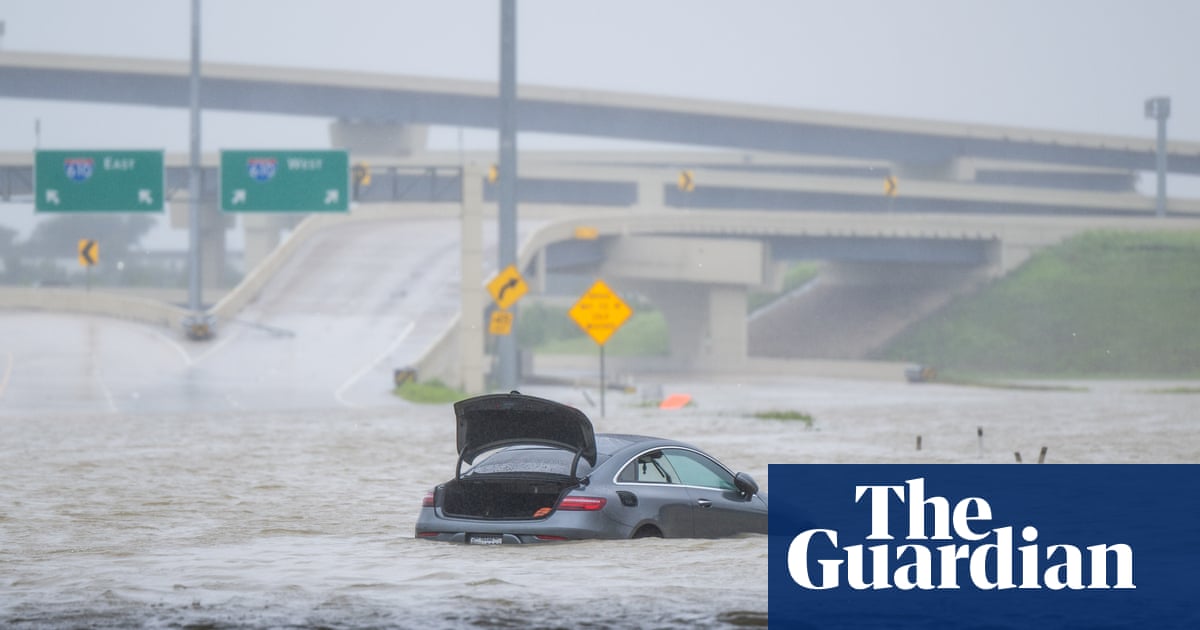Hurricane Beryl supercharged by ‘crazy’ ocean temperatures, experts say | Hurricanes

Hurricane Beryl, which slammed into Texas on Monday after wreaking havoc in the Caribbean, was supercharged by “absolutely crazy” ocean temperatures that are likely to fuel further violent storms in the coming months, scientists have warned.
Beryl left more than 2m people without power after making landfall near Houston as a category one storm, after having rampaged through the Caribbean as a category 5 hurricane, with wind speeds reaching 165mph, killing 11 people.
There has never been a category 5 Atlantic hurricane this early in the year before, with most major storms forming closer to September. Beryl, however, rapidly accelerated from a minor storm to a category four event in just two days.
This deadly intensification was aided by unusually hot ocean temperatures along much of Beryl’s path, scientists say, with seawater heated by the climate crisis helping provide the storm with extra energy over the past 10 days.
“Beryl would be astounding to happen anyway, but for it to form in June is completely unprecedented,” said Brian McNoldy, a climate scientist at the University of Miami. “It’s just remarkable to see sea temperatures this warm.
“I don’t think anyone would expect an outlier like this to happen, it exceeded expectations. With a climate-change influenced ocean, we are making extreme storms like this more likely to happen.”
While ocean temperatures around the world have been steadily marching upwards as the planet heats due the burning of fossil fuels, the past year has been “off the charts”, according to McNoldy. Last year was the ocean’s hottest on record, with marine heatwaves sweeping 90% of the globe’s oceans. This surge in heat has barely paused, with sea surface temperatures records tumbling every single day for 12 months in a row until March.
A slice of the tropical Atlantic stretching from central America to Africa called the main development region is the main spawning area for most hurricanes and this stretch has been “amazingly warm” in recent weeks, McNoldy said. In places across the northern Atlantic, temperatures have been as much as 5C (9F) above normal in the past month.
Ocean temperatures in the region typically peak in September or October but the extra heat has delivered such conditions unusually early this year. “In the Caribbean Sea it has actually been warmer than its usual peak since mid-May, which is absolutely crazy,” said McNoldy. “If the ocean already looks like it’s the peak of hurricane season, we are going to get peak hurricanes.”
Temperatures across much of the Gulf of Mexico, meanwhile, are “essentially as warm as bathtub water,” said Alex DaSilva, lead hurricane expert at AccuWeather. “Those warm waters are at the surface, and they extend hundreds of feet down. Warm waters act like jet fuel for hurricanes, and it won’t take long for temperatures to rebound in the wake of Beryl.”
The persistently elevated ocean temperatures portend a potentially disastrous hurricane season, with the National Ocean and Atmospheric Administration forecasting eight to 13 hurricanes until November, up from the usual seven. The onset of the periodic La Nina climate conditions could further propel such storms. “Beryl is a worrying omen for the rest of the season,” McNoldy said. “This won’t be the last of these storms.”
While climate change isn’t necessarily increasing the overall number of hurricanes, scientists have found evidence that storms are now becoming fiercer, gaining in strength quicker and even moving more slowly. Hurricanes are drawing their power from warmer oceans, while also unleashing more severe bouts of rainfall due to the extra moisture held in the Earth’s atmosphere due to global heating.
Rising ocean heat poses new threats in terms of damaging hurricanes – some scientists want a new “category 6” classification to be added to storms above 192mph – but also to the vast network of life, including humanity, which depends on the marine expanse that covers 70% of the planet.
Oceans are soaking up vast quantities of human-created emissions and heat, which is shielding people on land from even worse temperature rises but also warping fish populations, dissolving away coral reefs and shellfish, robbing the seas of oxygen and potentially upending foundational ocean currents.
Such dramatic changes to the oceans will have an extraordinary legacy beyond individual human lifespans, scientists warn. “The time scale of the oceans is not as fast as the atmosphere,” Celeste Saulo, secretary general of the World Meteorological Organization, said earlier this year. “Once a change is established, I would say it’s almost irreversible in time scales that go from centennial to millennial.”
Source link




